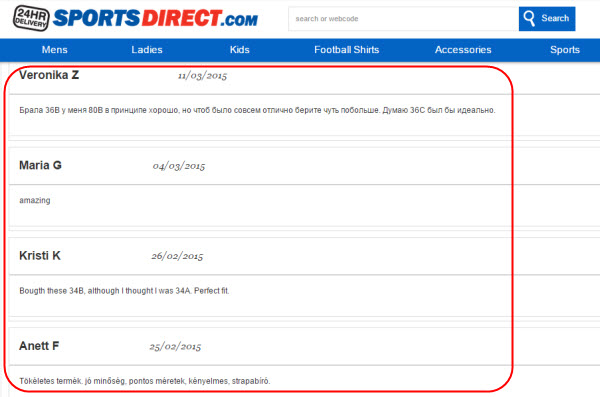However, for an e-commerce store opens for everyone around the world, if it is only available in English then you should understand that you’re missing something. It’s because English-language-only websites just have less than a quarter of the world’s internet users visited.
How about the rest? Especially when your business has stores operating internationally. Come to this point, go international means optimize for local. And language is a piece of the cake.
In this article, I’m going to show you the importance of making your e-commerce website multilingual and some useful tips on that.
Why supporting different languages is important for e-commerce website?
When limiting your website to only English language users, you’ll miss out a great number of potential buyers who don’t use English. Plus, if you have a store opens in Spain, for example, but the website doesn’t support Spanish, it’s a big down for user experience for Spanish customers.

Many e-commerce stores support multiple languages to enhance online shopping experience
So you might have been wondering that if your e-commerce website is optimize for multiple languages, then how many language should it support? Research says that your site needs to speak at least 14 languages to stay competitive internationally. And the number of languages should be 20 if you want to reach the pocket of about 90 percent of global buyers.
Of course if your business is not that big and your targeted buyers aren’t from such many countries, you can narrow down the list. But no matter how you look at it, you can’t deny the benefits of a multilingual e-commerce website.
How can you utilize multi-language support feature to drive more customers?
Use localized user-generated content
User-generated content such as comments, feedbacks or testimonials on your product and service always brings more credit for your e-commerce reputation than marketing words themselves. To utilize this type of content to attract more leads globally, you should find a way to enable and encourage customers on your site to write comments, feedback or testimonials in their own language.
I see that many sites like SportsDirect are doing this:

Bring your customer support to be “multilingual”
It’s important for not only website’s content to be available in different targeted languages, but also support service as well. Make sure you have agents who master the desired languages to support customers.
Additionally, support tools must be smart with multiple languages too. For example, in Subiz live chat, it automatically detects the language of current visitors (with different 9 languages) and displays the language in live chat window accordingly.
Also, other support elements such as FAQs should be translated into different languages too. You can display different versions of FAQs in different translated version of your website.
Make SEO optimization in different languages
Your website can speak international conversation, cool. Now make it better by making helping Google to understand what it says. You always need to pay attention on keywords – in this case, having keywords translated in different languages is important.
However it is suggested that you shouldn’t plainly translate these keywords directly from a dictionary or Google Translate. Use Keyword planner for better suggestion and a sense of the better keyword in different languages.
Oh, don’t mind special symbols in written languages! Search engines now are made to read them real well. For more tips on SEO optimization for multilingual websites, read this awesome article by Search Engine Watch.
Go social in various languages too
The voice of your brand on social media shall be understood in different languages. Why? Because your posts will be appeared on consumed via your fan’s timeline, right? Not yours. Therefore, try make your brand socially globally friendly. And don’t ever think about using Google translate for this task or you’ll just sound really weird and unnatural.
So, just how? Hire someone else to do the job or use some other better tools like Milengo, Translations.com or Lingo24. Or you can find local volunteers to help you out.
Last but not least, when it’s on social platform, especially when you’re aiming at local customers, remember to consider publish content locally related to them. Oh, mind the time zone too!
Wrapping up
Can your website say “Ohaiyo gozaimasu” to a Japanese customer? If you are planning to step up your website to the international market, don’t hesitate in making your site “talk” in different targeted languages. Work your ideas around the tips above and you’ll have a better international lead conversion machine!
How have you been doing with “multilingual-izing” your website so far? Share with us your experiences!




